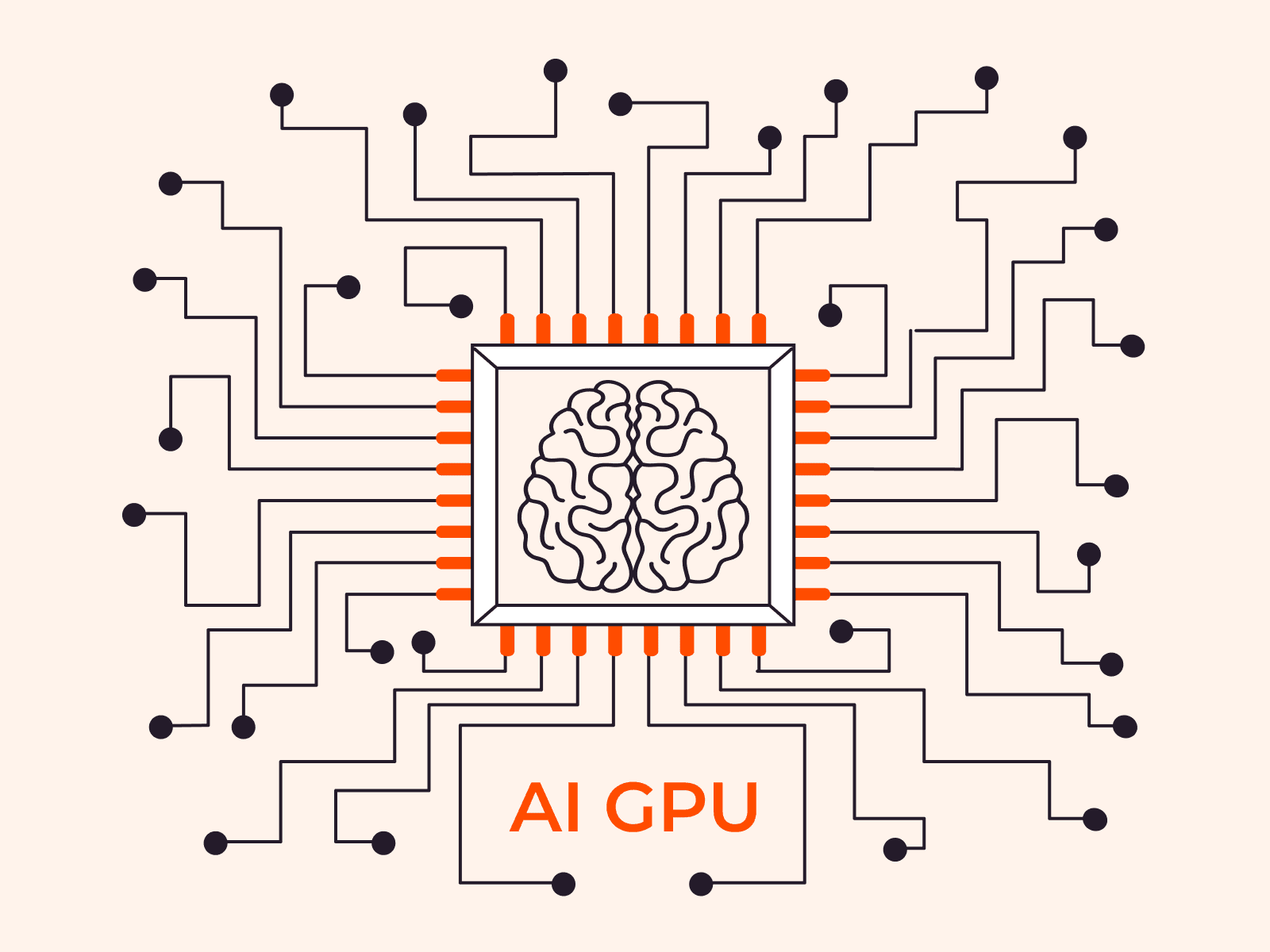
The game development industry is among the most dynamic IT markets in the world.
Its size increases by 9–10 % each year. As the competition grows, manufacturers strive to be the first to offer users the highest quality products and the most vivid experiences. It’s here that advanced technology comes to the rescue, especially artificial intelligence.
Thanks to AI, developers have new ways of improving games from chatbots and big data analysis tools to automated script generators. But along with these new tools, new challenges emerge. The design process is becoming more complicated and, as a result, the development environment gets more complex.
Here are several scenarios illustrating the use of artificial intelligence in current game development and the requirements they impose on developers.
Interface design
Designing the interface of a modern game is a laborious process that requires an entire team of UI/UX specialists, game designers, artists, and producers, all of whom sometimes spend months or even years to achieve the desired result.
With this understanding, researchers from the Polytechnic University of Milan trained artificial intelligence to independently design video game interfaces.
This technology was immediately used by the developers of Doom to automatically create new levels. According to the researchers, the algorithm was based on an analysis of existing interfaces, thereby significantly streamlining the work of game designers and speeding up game releases.
Graphics improvement
With the help of AI, it’s possible to not only design an interface but also make it as realistic as possible. Game designers greatly value such things.
Nvidia specialists trained a neural network to generate graphics for games based on real-world photos and videos.
There are three stages to designing new 3D environments with a neural network:
- Downloading photo and video content that form the basis for rendering.
- Analyzing individual objects such as cars, trees, and buildings.
- Transferring objects to a virtual interface model created by developers.
Using this algorithm can significantly reduce the costs of creating content while allowing users to feel the effect of seeming present in the real world when playing.
It’s worth noting that this technology has a great future not only in gaming but also in the film industry and the creation of VR products.
User content moderation
Just like in real life, there are individuals who start conflicts and break rules in the online gaming world.
Such people are especially active in group chats where continuous moderation is needed to maintain order. Initially, game chats were moderated manually by employees or volunteer players who were then responsible for moderating the discussion and maintaining adequate communication.
In modern games, AI chatbots are used for these purposes. Usually, the bot performs the following tasks: automatically clean comments of unwanted text, block violators, and unblock violators if they are willing to comply with the community’s rules.
However, as games evolve and become more complex, not only do text chats emerge, but also voice chats where moderation is required as well.
Spirit AI, which released the Ally bot two years ago for text moderation, recently announced the creation of an AI that would maintain order in game voice chats.
First, the bot will record messages and send them to a human moderator. Over time, as the bot gains experience, it will be able to block toxic players on its own. Meanwhile, according to Spirit AI, game developers will be able to customize the degree of “severity” of the filters used by their product’s algorithm.
Character behavior and scenario changes
Another application of artificial intelligence—programming an opponent’s behavior—has developed within shooter and strategy games because the core of such a game’s entertainment relies on the realistic reactions of virtual rivals.
Traditionally, a game’s AI was based on analyzing user actions as well as opponent reactions to such user actions. However, as gaming technology became more complex, the need grew for a constantly learning, adapting algorithm that both responded to and predicted gamer actions.
The creators of Half-Life became the pioneers of a self-learning game AI. By improving the navigation mark system, the developers of Half-Life 2 were able to make a character’s actions more elaborate and realistic. This included shooting, moving, and taking cover.
Unlike shooters where the action takes place between the player and the opposing virtual world, artificial intelligence in multiplayer games can take on the role of a rival that confronts several real players at once.
This scenario was successfully tested three years ago by Elon Musk’s OpenAI. The company created an algorithm that defeated several professional Dota 2 players.
According to OpenAI, it took two weeks to train the bot to play the game from scratch. During this time, the algorithm tested many tactics by competing with a virtual copy of itself. The developers claim that during this “training”, the bot finished more sessions of Dota 2 than any person.
Player retention and increased engagement
Player retention and re-engagement is a relevant issue for game developers of any genre. In this case, AI-based bots, or so-called retention bots, come to the aid of developers once again.
Nordeus is one illustrative example of implementing such an algorithm.
The developers of the Top Eleven Football Manager simulator were able to increase player retention by 35 % by making a bot automatically send reminders to users who hadn’t entered the game for a long time.
As a rule, a bot tasked to increase gamer engagement either writes them outside the game with the offer to launch the program or inside the game to remind them about taking turns and recommending friends.
Retention bots can also deliver news daily, tell interactive stories, publish leaderboards, provide loyalty program reports, and perform other actions aimed at increasing the audience’s interest in the product.
How to speed up game development
The aforementioned scenarios on using artificial intelligence in video games require developers or data specialists to be able to create, train, and deploy machine learning models as quickly as possible.
Such conditions require choosing the most comfortable development environment that will not only work smoothly and scale easily, but also won’t require large expenses to maintain network infrastructure and integrate with data centers.
This is the environment we offer our customers.
Gcore cloud services are easy to enable and operate while also reducing capital costs and time required for market entry.
“We launched Gcore Cloud to offer game dev companies a unique platform for working with AI-based applications.
Through the cloud, we provide customers with a ready-made development infrastructure with a GPU, a framework, and the necessary functionality for training and inference of machine learning models.
At the same time, management of all necessary resources is carried out via a user-friendly interface, and payments are made according to the Pay-as-you-go model with per-minute billing.
The Gcore cloud, located in highly reliable Tier IV and Tier III data centers in Luxembourg, is well-protected from any type of cyberattack.”Head of Gcore Cloud Platform Department, Vsevolod Vayner
Related articles
Subscribe to our newsletter
Get the latest industry trends, exclusive insights, and Gcore updates delivered straight to your inbox.






